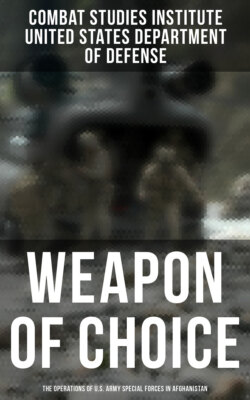Читать книгу Weapon of Choice: The Operations of U.S. Army Special Forces in Afghanistan - Combat Studies Institute - Страница 31
На сайте Литреса книга снята с продажи.
Building the JOC Inside the “Snake”: TF Dagger’s JOC
ОглавлениеAfter three false starts, CPT Carlos Hernandez (pseudonym) had been told that the 5th SFG intelligence section would leave for Central Asia on 8 October. This time it did, and Hernandez and the intelligence staff landed at K2 in the predawn darkness of 10 October. The staff had been cramming on Afghanistan since 9/11. Before then, the former 82nd Airborne Division infantry platoon leader only knew that it was “a mountainous country with lots of snow in the winter” in the CENTCOM region. Since then, his section had been searching classified and public data bases for information on Afghanistan and had talked with analysts at the Defense Intelligence Agency, seeking background material on several Afghan warlords in the Northern Alliance; namely, Rashid Dostum, Mohammad Atta, Fahim Khan, Ishmail Khan, and others. To their dismay, there were no personality data bases available or any information about any subordinate leaders. Copies of The Bear Went Over the Mountain and The Other Side of the Mountain, books on the Soviet war in Afghanistan in the 1980s, were circulated among the staff.
Along with the intelligence he needed to collect and analyze, CPT Hernandez was also focused on setting up his S2 “shop” in the JSOTF headquarters. En route to Uzbekistan, he chanced to meet MSG Jason Bennington (pseudonym), a 5th SFG staff NCO during a refueling stop at Sigonella, Sicily. Bennington was returning from the site survey of the former Soviet air base at K2. Elements of the Air Force Special Operations Command (AFSOC) and the 528th SOSB were already there, Bennington reported. Air Force aircraft and Army helicopters were at the airfield, ready to conduct search-and-rescue missions in support of the bombing campaign that had begun on 7 October. On a hand-drawn sketch of the airfield, Bennington pointed to a spot next to the runway and said, “Here’s the space for the JSOTF.” The Uzbeks had granted the Americans use of abandoned parts of the active air base. Since the Air Force had already occupied the only building, the 5th SFG staff would have to create their task force headquarters with tents.
Figure 52. Dry for the moment.
The “space for the JSOTF” that Bennington had pointed out turned out to be a narrow strip of land about 200 feet long and 100 feet wide between a taxiway and several old concrete aircraft bunkers. Twenty large tents were assembled and then erected in a row, mostly end to end, creating what became known as the “Snake.” Shortly after the tents were set up, a heavy rain began to fall, and the downpour lasted for 10 days. That was when Hernandez remembered one of the “lessons learned” from the Kosovo deployments: “Never set up tents next to a runway or the adjacent taxiways because they are designed to allow water to drain naturally off their surfaces into adjacent fields.” To make matters worse at K2, the dirt security berms that surrounded the base prevented natural runoff. There was no other location big enough (and more importantly available) to go. Within days the water was ankle deep in the JOC. Computer servers, cables, and electrical wiring soon filled the folding tables used as desks. Throughout the rainstorm, Special Forces engineers continued to elevate the wooden flooring in the Snake. Although the temperatures were surprisingly mild, the rain threatened to shut down the JSOTF headquarters just as the UW campaign was ready to “kick off.”
The JSOAC was charged with the CSAR mission. On 12 October, Mulholland told LTC Brinks, the JSOAC commander, that six Special Forces ODAs would be infiltrated into Afghanistan within 48 hours.
